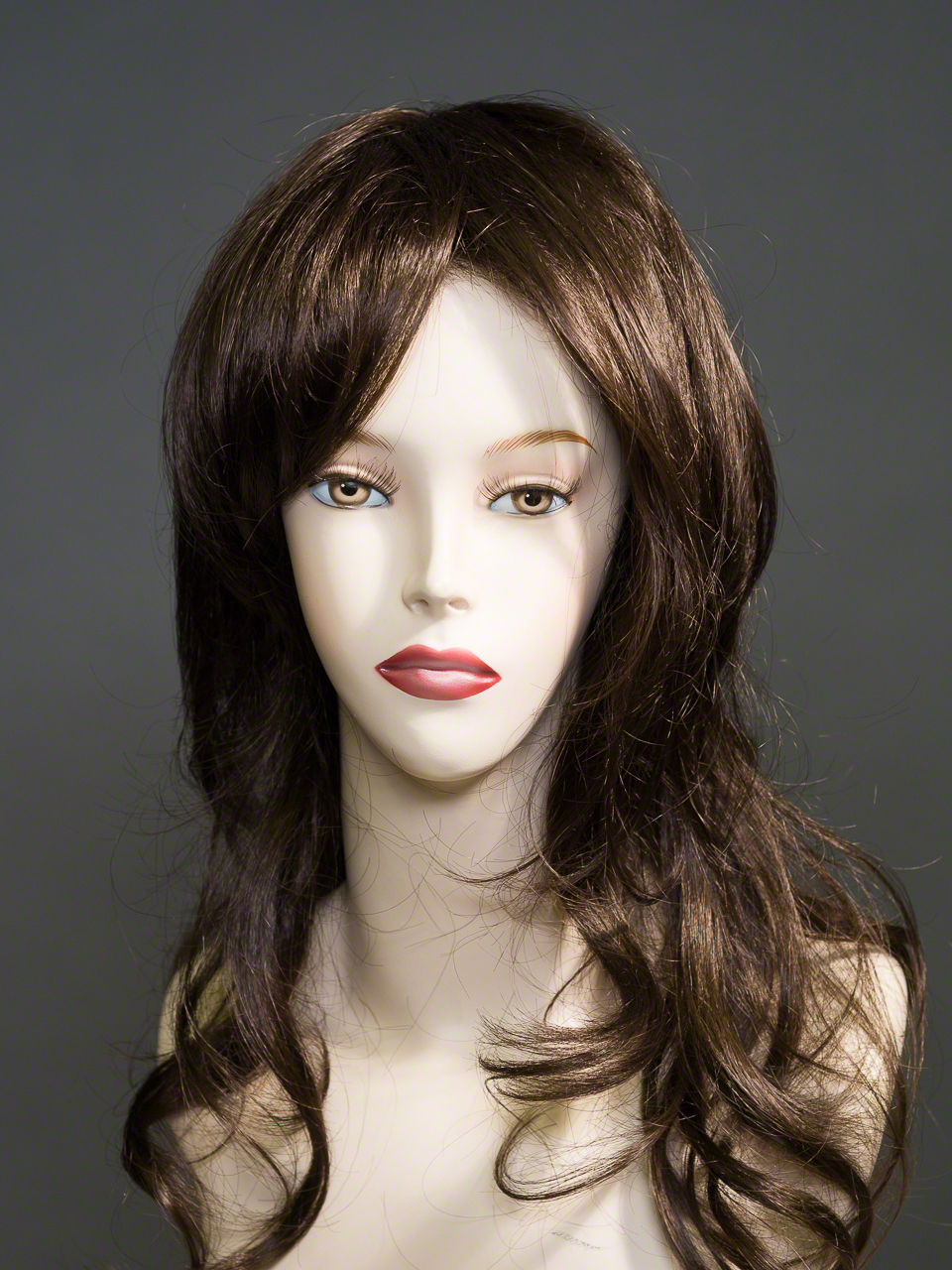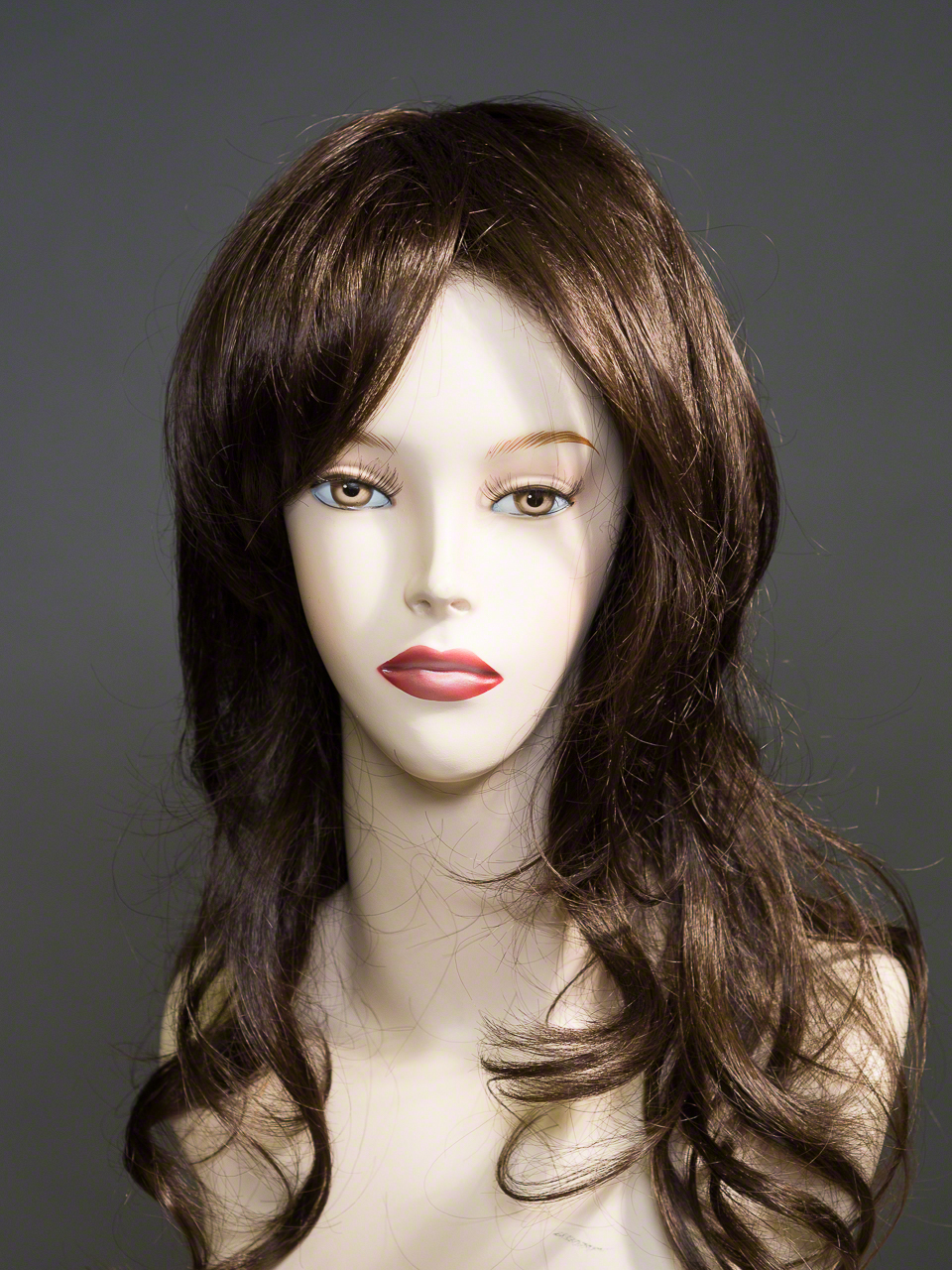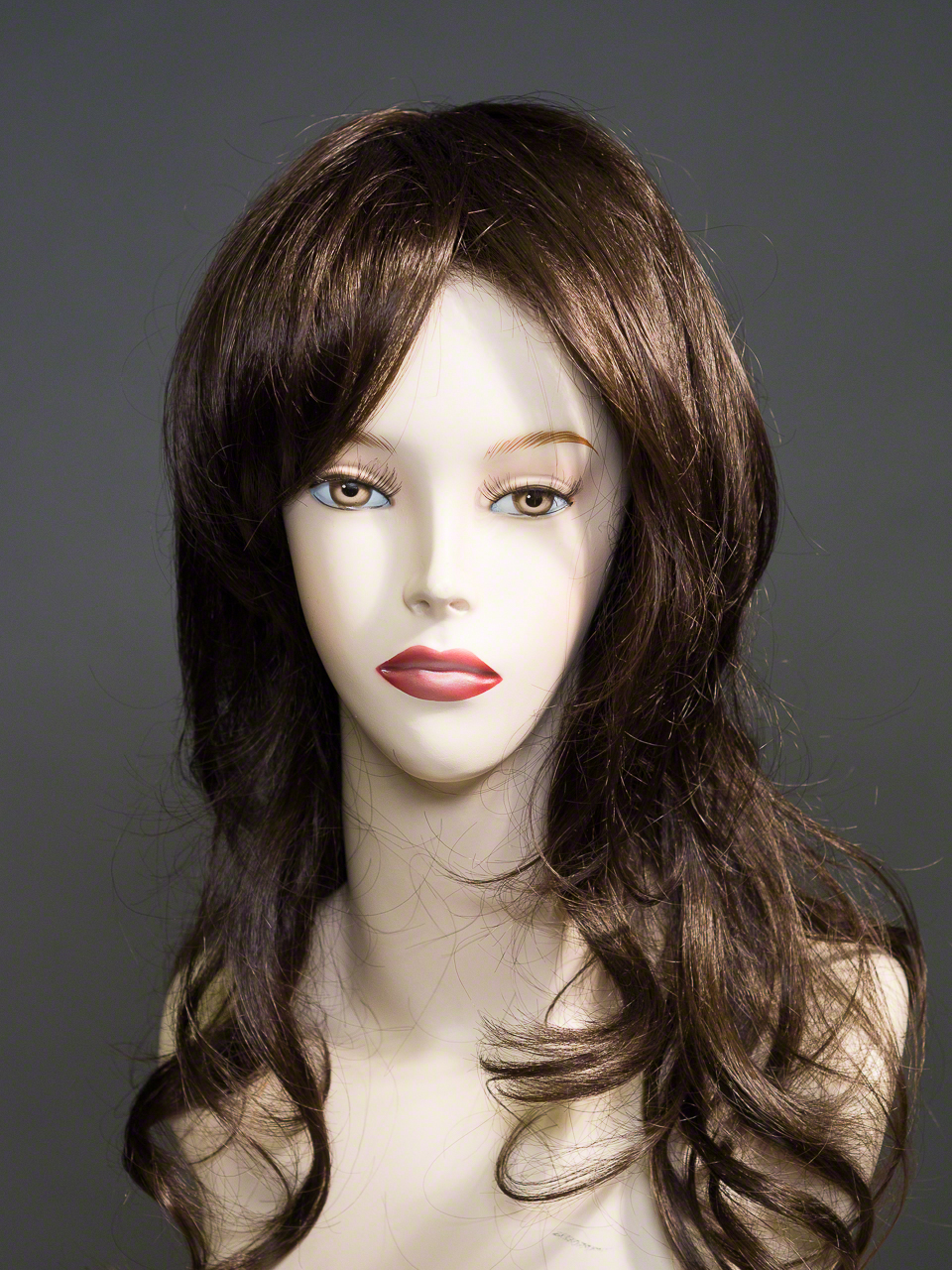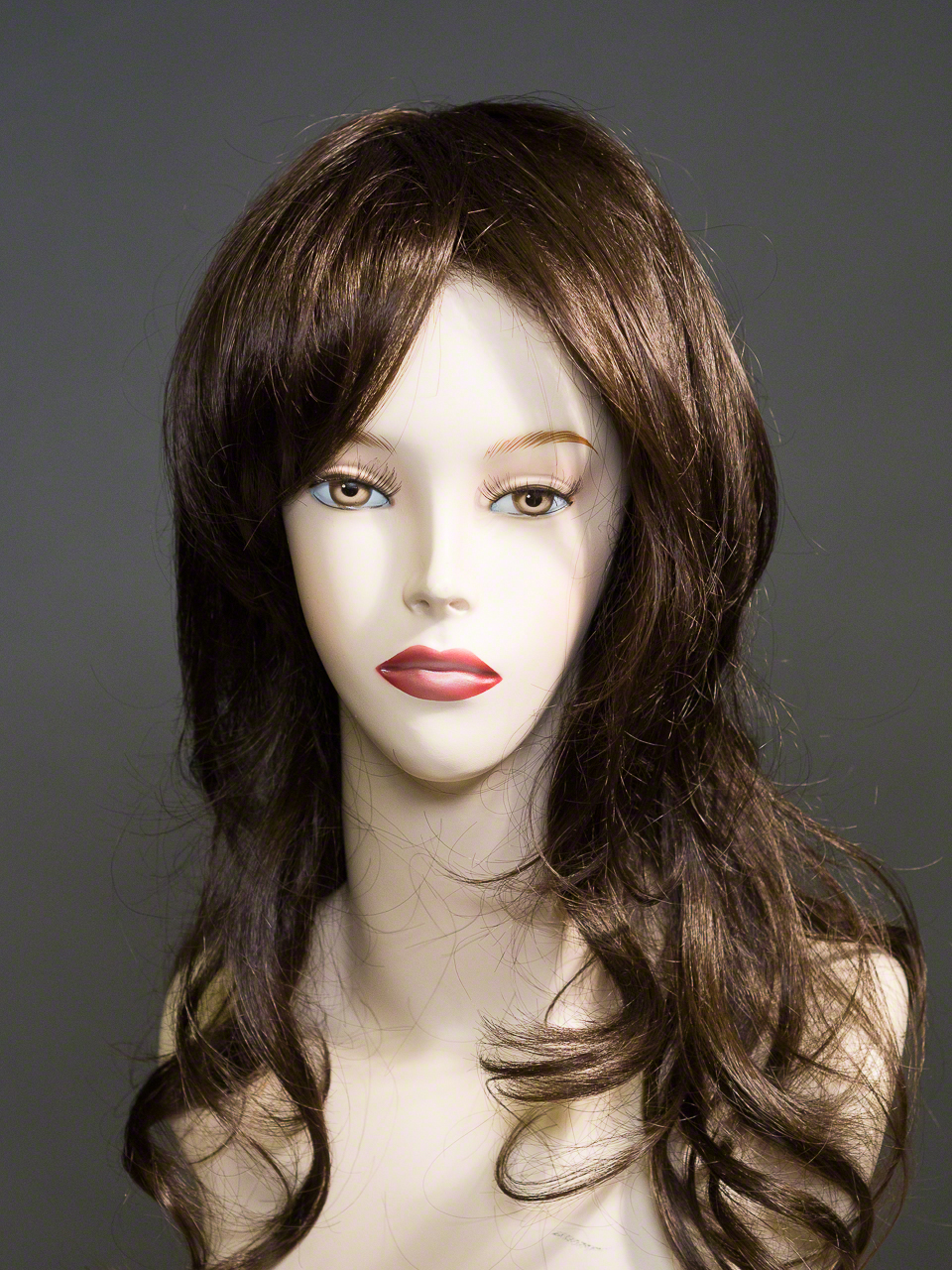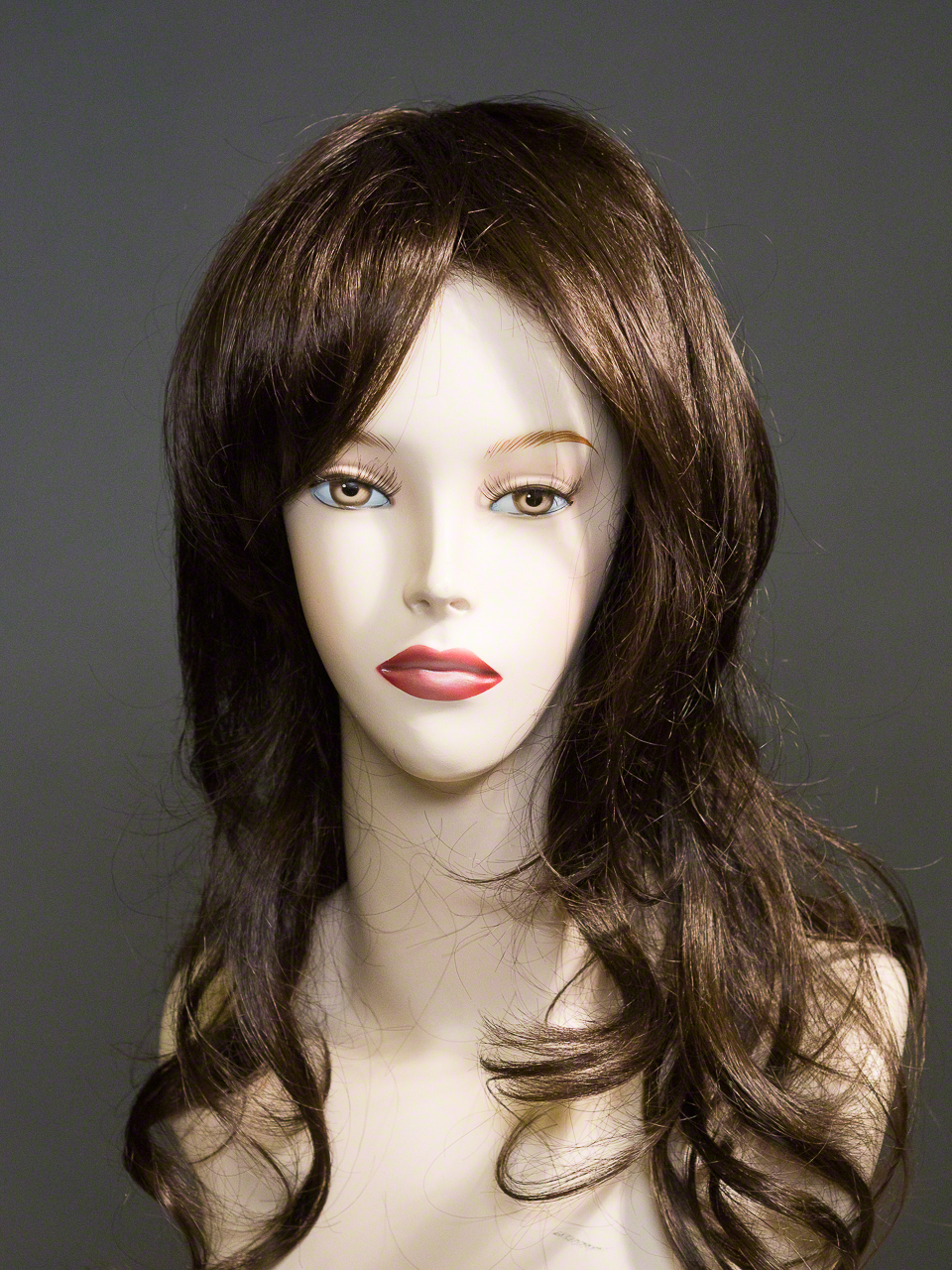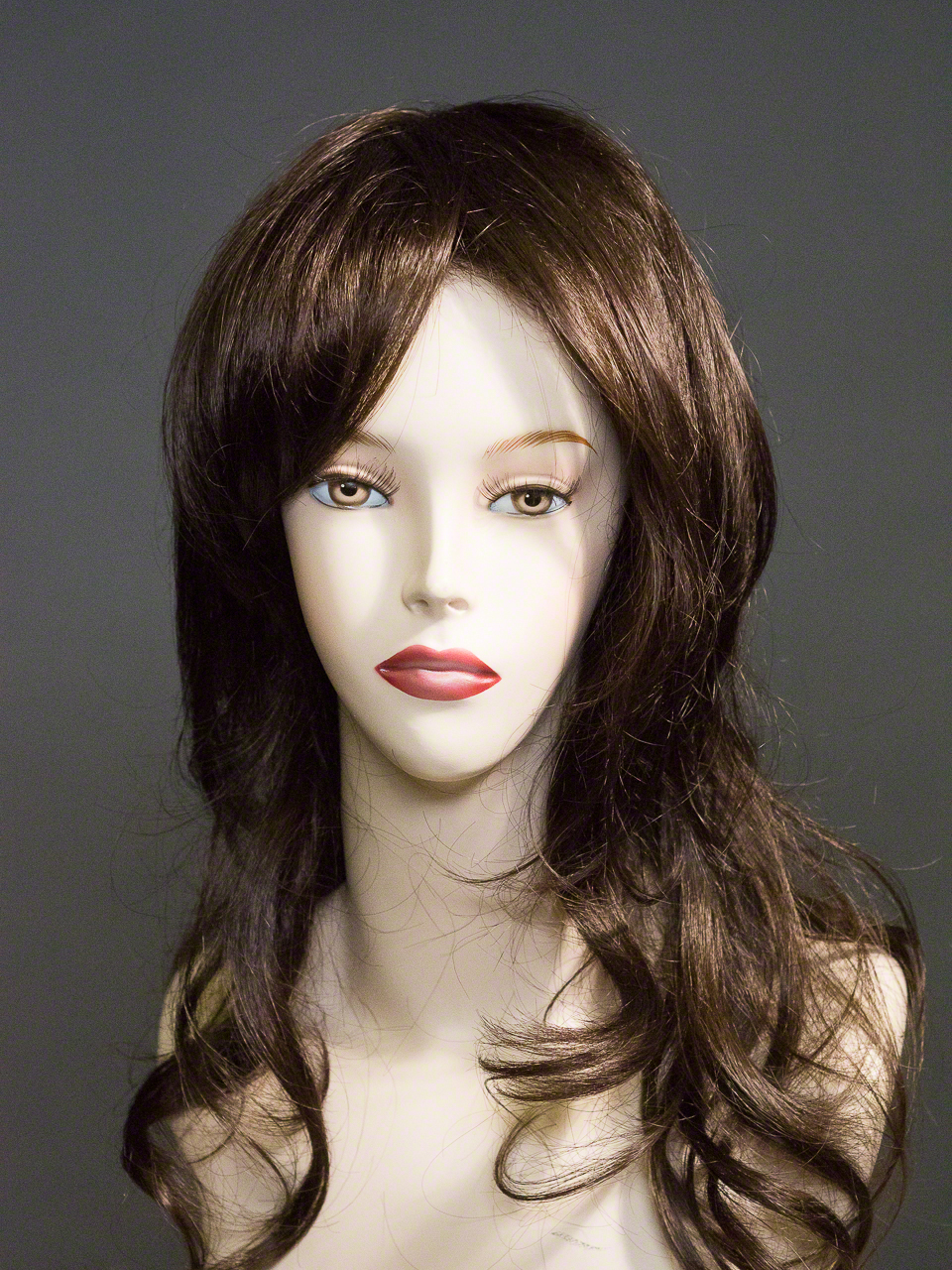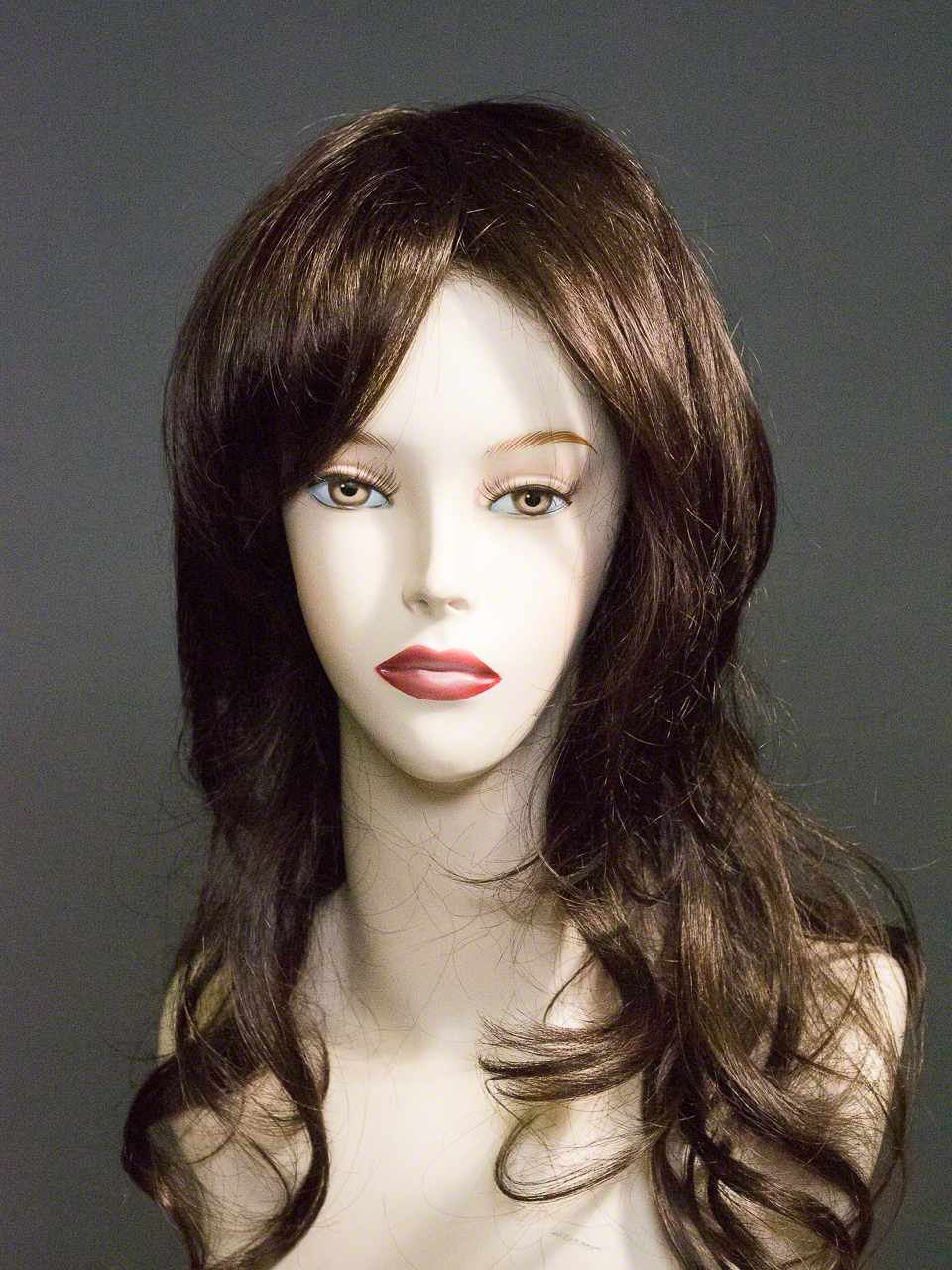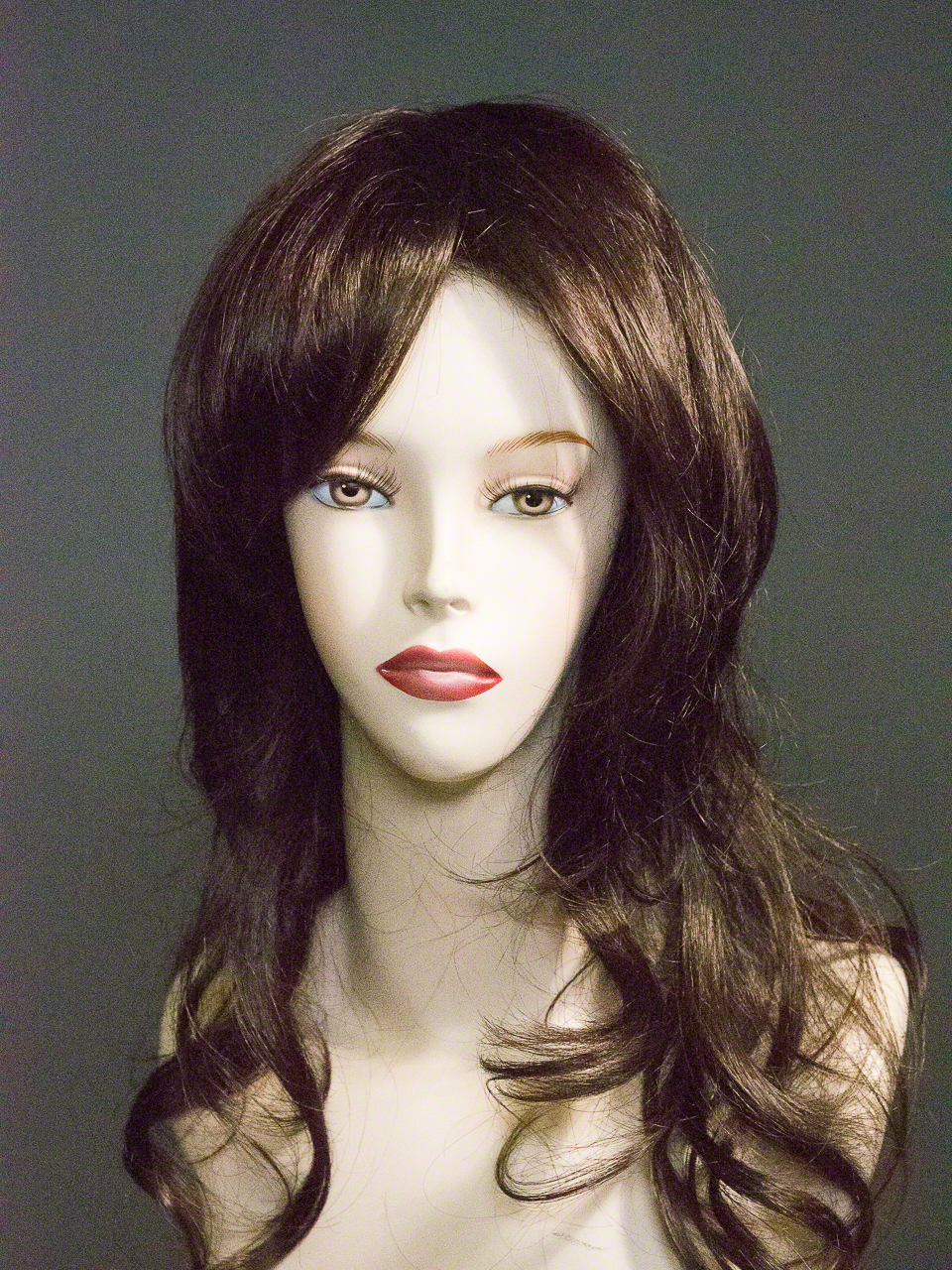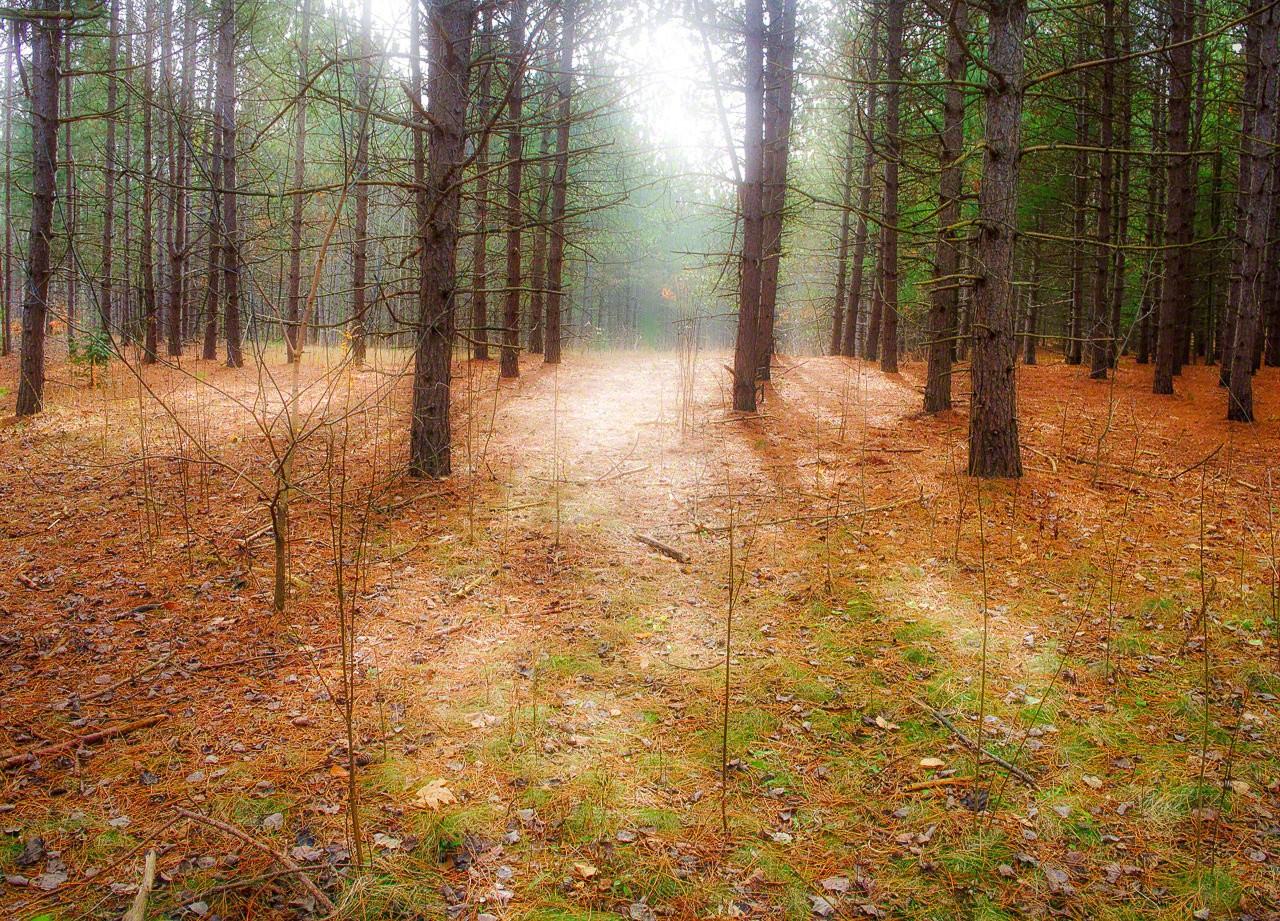REVIEW : The Olympus OM-D E-M5 Mark II - Power in your Hands
/Photographers are always looking for advantage, being it in sensor power, lens reach or scope and very often weight and size reduction. When Olympus released their OM-D E-M5, they really shook up the competition. The camera was fast, easy to handle and extremely usable. They followed up with the E-M1 and then the E-M10. Recently, Olympus released the second iteration of the E-M5 called the E-M5 Mark II and the good folks at Olympus sent me one to review, along with a pair of lenses, the 45/1.8 and 12/2.0. It's a very impressive camera and I wanted to share my findings with all of you.
I've included the spec sheets from Olympus at the end of the review so you don't have to wade through my reiteration of them so let's get right to the user experience.
Initial Handling
The E-M5 Mark II looks very much like an old Olympus OM-1. The OM-1 was very successful because it brought true SLR capability into a smaller body that was easier to handle for people with smaller hands. Not surprisingly, the camera became successful with photographers of all hand sizes. With their DSLR styled mirrorless products are enjoying the same appeal.
The E-M5 Mark II uses the Olympus micro 4/3 sensor that is has been proven to be a successful delivery vehicle. The camera takes all of the Olympus M-Zuiko Digital lenses available as well as M43 mount lenses from other vendors. Like the original E-M5, the control layout is precise and easy to use. The shutter button is large and falls naturally to the index finger. While the camera has a pentaprism style top end, there is no mirror assembly, instead there is a bright electronic viewfinder replacing what would have been an optical finder. On the left side, where the rewind know would be is the mode dial offering the usual PASM choices, plus Intelligent Auto, Scene Modes, Layouts and Movie modes. There is a lever on / off switch to its right. The "pentaprism" has a hot shoe on top that takes the tiny flash that comes in the box. It's equivalent to a pop-up flash on other mirrorless cameras, small and not spectacularly powerful. One of the advantages some DSLRs have had is their native remote flash control capability, and Olympus brings that advantage to the OM-D lineup. The documentation is not clear, but I do not think that the included flash can act like a controller. Right of the pentaprism are two assignable control wheels and three programmable function buttons and a button set to start and stop video recording. The body's small size puts these controls rather tightly packed. It takes a bit of practice to use them without misplacing my fingers. The buttons have default settings and are labeled accordingly with the appropriate icons. When you reprogram them, you have to remember what you did as there are no indicators showing what you've done without diving into the menus. On the upper rear right is a two position lever switch with a Fn button in the centre. This would be ideal for a rear button focus, but as a left eyed shooter, it's placed to close to the EVF to be useful to me. Left of the EVF is a very precise clicking dioptric adjustment that I found to be very effective and did not get inadvertently changed as so many do.
The rear LCD is of the flip rotating type so suitable when shooting video and you are in the shot, or for selfies. You can also set the tilt to make overhead or low shots easier to compose and shoot. The LCD is configurable as a touchscreen. I'm not a big fan of touchscreens, but through my test nose pressure didn't done anything untoward. I did turn off touchscreen focus point selection to be safe. To the right of the screen is 4 way rocker with centre OK button. There are four dedicated buttons surrounding it for Menu, Info, Play and Trash.
The body has a single SD card slot on the right side so it's easy to change cards while the camera is on a tripod or has a plate mounted. A left side body plate covers a microphone input, a micro HDMI output and a USB connection that uses that odd format mini-USB port used on some Nikons. On the front of the body, there is the lens release of course, along with a depth of field preview button (reprogrammable) and under a plastic cover a PC style X sync port. I am so glad to find a PC port on a new camera. The cover is of the screw on type and buyers should plan on losing it after first removal. Beside it is an AF assist lamp. The tripod mount is centred under the lens properly and is the standard ¼-20 mount. Access to the battery compartment is from the bottom and houses the BLN-1 battery. The battery is rated for approximately 310 images per charge. There is a removeable (and loseable) plastic cover protecting a multi pin connection for the accessory battery grip. Olympus sent me the battery grip as well and I'm really pleased that they did. The grip is in two parts, the grip unit and a separate battery bay. The grip has a slot for the base cover mentioned above. The grip handle incorporates a shutter button that takes on the role of the top deck shutter button and control wheel when the grip is mounted. The battery pack attaches to the bottom of the grip portion via the tripod mount and delivers another one on the bottom. The battery pack adds a vertical grip shutter release and two control wheels mimicking the ones up top. There are also two programmable function buttons on the battery pack. The pack holds an additional BLN-1 battery. There is a lockout switch on the pack to disable the lower buttons and controls. The battery pack also adds a headphone jack, critical for serious video, and a DC power port to use with an AC adapter.
In either of the grip configurations, Olympus has added small rests for your thumbs that are so well designed the balance you gain is incredible. The other thing that stood out to me right away is that the EVF is wrapped in a soft rubber ring and the entire EVF extends about ⅜" behind the back of the camera. This small thing goes a long way to avoiding the accumulation of face sweat on the LCD panel. The panel moves as mentioned but is partly recessed into the camera back to maintain the smaller size. The strap lugs are of the D type and get in my way without the grip, but once mounted, the grip fronts the D ring on the right removing that annoyance factor. This is a very good thing.
If you owned an E-M5, the battery holder portion of the grip is what you bought for it. The new unit is sold in two pieces so existing owners of the battery holder don't have to buy a second one.
Firmware Fighting
A day after I received the evaluation unit, Olympus released a firmware update for the camera and I always like to be using the most current software when conducting a review. Manufacturers that try to add value through updates impress me, and I didn't want to miss anything. I was surprised to discover that unlike most every other OEM, you cannot just download the new BIN file and copy it to the card, and then update the firmware in camera. In the case of Olympus, you have to download their Updater and connect the camera to the computer via the supplied USB cable. Sounded backward to me, but I wanted the new version.
I will save readers the trials and tribulations involved in getting the firmware updated. Let's leave it that it was far more complex and less user oriented than I think it should be and move on.
Now I am completely current on the camera and lenses from a firmware perspective. Most of the enhancements are in areas outside of my use cases but will be valuable to many owners. They include Focus Bracketing S-OVF, time lapse 4K movie, slate tone, PCM sync for audio and video and manual focus clutch disable. There's also a flat movie mode that will be very useful for filmmakers who will do colour grading in post-production - that one I would definitely be using.
First Shooting Experiences
When I go out to shoot, it happens fairly rarely that someone will approach me to ask about the camera I am using. Partly that may be due to my appearance, but in general most folks just leave me be. Not these times. On four separate occasions, different people came up to ask what that "little" camera was, saying it looked like an old film camera only smaller. A let a couple of them handle it (people I know from various seminars I've done) and the feedback was consistently positive about feeling good in the hands, and being very usable despite the smaller size.
I shoot a lot of different cameras. In order to be fair to the nice folks who send me gear to try out, I like to go through the owner's manual completely. There is a "starter" manual in the box. It's as described, for starting. Not particularly deep. There is a full manual on a CD in the box. Apple has not included removable media readers in their computers for years, so that's quite useless. I would propose to the good people at Olympus, and everyone else for that matter, to accept that CDs are dead and include all documentation on a USB stick. USB is not perfect, but it is still ubiquitous. You can of course download the complete manual from the Olympus site and that's what I did.
The camera and grip fits my hands very well despite being as compact as it is. I got the camera set up to shoot in RAW only, and tried a series of shots where I changed modes, changed ISOs and shot using the EVF. I find shooting from the LCD to be inconvenient and unsteady but that's me not the camera. I settled on my usual go to mode of aperture preferred but went outside my comfort zone to enable AUTO-ISO. I was at my local camera club meeting and there is a skating rink there and I grabbed some very quick shots with the 12mm wide open at f/2 letting the camera manage shutter speed and ISO. Lighting was truly crappy with big spotlights, building lights, glare from the rink and the rest of town in darkness. The camera did a superb job and the image quality at ISO 3200 is excellent. I will likely shoot the 45mm more in studio, but as a walk around kit, I really do like this 12/2 lens. I had shot the 12-40/2.8 PRO on an E-M1 and it's beautiful and while I am not personally enamoured of the 24-70 range in general, many buyers will find that range to be perfect.
Shot outdoors under horrible light. Still looks darn good at ISO 3200
The camera came with a neck strap but as I don't care for them in general, I used a Black Rapid sling on the evaluation unit. The camera is so wonderfully light, there is no fatigue even if you walk around with it on the sling all day long. Buyers looking at mirrorless cameras often cite weight and ease of transport as criteria in their shopping and the E-M5 Mark II definitely satisfies, even with the battery grip attached as I am using it. If you suffer from arthritis or other hand pain, you owe it to yourself to try out one of the OM-D lineup. It may rekindle your photographic joy due to the easier grip and lower weight.
I tried out the new 40MP multi-exposure capability. Basically the camera shoots 8 frames with subtle sensor shifts for each frame then combines the images together into a single 40MP file. It's an interesting concept, although I confess I am not sure that I would use it regularly.
When I began to work with the RAW files, I did note after shooting that the Olympus RAW file structure is 12 bit. 8 bit is common for JPEG and most RAW formats tend to be 14bit. This means that the RAW files have less pixel data than a 14 bit file, but one would really have to shoot the same scene with the same settings at the same time to truly see differences.
Built In Services
Like so many ILC cameras, as well as DSLRs, the E-M5 Mark II has a plethora of Scene and Art modes built right into the camera, along with the ability to do in camera editing. For beginners and those photographers who want finished JPEGs right out of camera, Olympus has covered a very wide gamut of need/want options. While these tools don't intersect with my personal use cases, having them built in for those who will use them is a nice advantage.
Glass Options
The good folks at Olympus didn't have a bag full of lenses to send me, but what I like about the Olympus family particularly is the breadth and scope of lens choices. There are the general M.Zuiko lenses and the M.Zuiko PRO lenses that are weather sealed. For my use cases, I would want the 7-14/2.8 PRO and the 40-150/2.8 PRO and the 1.4x Teleconverter PRO. Since I shoot a lot of closeup work, I would also go for the 60/2.8 Macro. While some buyers are looking to reduce the amount of glass that they carry, and I can certainly understand that, the wide number of choices and price points give Olympus an edge over their competitors. I was able to borrow for a short period the 75-300/4.8-6.7 The crop factor for M43 is 2x so that looks like a 150-600 on a full frame. That lens is small and very lightweight.
Supplemental Lighting
The little flash that comes in the box is like any other mini popup style flash. It's small and not very high powered. The head tilts for bounce work, but the power level is so low (that's how you get really small) it will be working very hard even in an average room with a white ceiling. Strapping on a small homemade bounce card would be more useful. For real control including controlling remote flashes, you would need the FL-600R flash. This is a mid powered hotshoe mount flash that can work on top of the camera as a flash or as a commander and control other FL-600R flash units. Of course the fact that there is a hotshoe with a standard centre contact as well as a separate PC sync port means that you could use most any trigger or sync cable flash with the E-M5 Mk II successfully. Third party TTL options are skint, but there is enough flexibility in supplemental lighting to suit most all use cases. The E-M5 Mark II accepted my Profoto Air remote and triggered my strobes consistently and without any issue.
Tethering for Studio Work
While I was hunting firmware, I also learned of an update to Olympus Capture, their in house developed tethering solution. It downloaded and installed fine on El Capitan and on first launch found a couple of minor updates automatically. I like this "find updates automatically and download them" model very much. I still get to choose if they get installed but at least I have them. Tethering set up quickly and is very fast. Both Nikon and Adobe could take a tethering lesson from these folks. The only drawback is that the in box USB cable is too short to be really useful for anything, so I used a TetherTools extension in the studio for more in-depth testing. It worked and did so reliably, so while some readers may not have considered a smaller ILC for studio work, know that it is absolutely capable of doing the job.
Video Performance
It's a sad reality that the majority of DSLR and ILC buyers never even try the video capabilities in their cameras. It's really sad because the video out of these devices puts all but true pro video cameras to shame. As one would gather from the title of this site, I see value in both stills and videos and it's also true that being able to deliver both to clients is becoming more of a requirement each day. Video in the E-M5 Mark II is about the minimum one should expect in late 2015, Full HD at up to 30fps All-I and up to 60fps IPB. The recording modes differ in that All-I footage is editable to the frame level, whereas as IPB does some cross frame compression. Either work fine for general video applications, although it would be nice to see a higher frame rate with All-I capability for multi-camera work and precise frame by frame edits. There is a 4K capability but it is an AVI format JPEG movie delivering the 4K images at 5fps. I don't have a use case for this myself, perhaps other users would find this very helpful.
ISO Performance
Overall, I found the OM-D E-M5 Mark II very flexibile in terms of ISO performance. As I usually do, I shot a sequence of Sondra at the different available ISOs under reasonable light, although this time I threw some harsher shadows at her so you can make your own value judgements. The images were all shot with the 45/1.8 at f/5.6 and a camera profile created with the Color Checker Passport was applied equally to all. I set the white balance using a Datacolor SpyderChecker card, using the 18% grey option and applied this to all images. Images were captured using AWB and all in Olympus' native ORF RAW format.
For my use cases, I found the Low ISO option (ISO 100) to be no better in image quality than the default ISO of 200 and that it had a yellowish cast. I find the images solid to 3200 and usable at 6400, superb for a M43 sensor. ISO 12800 is starting to fall apart, and the top end of ISO 25600 is appropriate when the question is about getting the shot or not and digital noise is not a consideration. I have found full frame and crop sensor cameras that do not perform as well as the OM-D E-M5 Mark II at higher ISOs so this camera gets very high marks in this regard.
Sample Images
I really enjoyed carrying the OM-D E-M5 Mark II as my always with me camera. It's small enough to do that, the lenses I had were small enough to fit in a pocket, so I wasn't festooned with gear. I shot it in the house, at the dog park and on a hike on my birthday. It was a grey day with very flat light. Here are a few samples, and let me be clear. I only shoot in RAW and I process everything that I am going to post unless I specifically say no processing.
I used three different lenses on my hike, the 12/2 (LOVE IT), the 45/1.8 (very nice) and the 75-300/4.8-6.7 (great range, a bit optically slow for my use cases). I found that the in body stabilization is very helpful with the longer focal length lenses. The information captured, while only 12 bit is quite rich and with a little bit of work, you can really make things pop. The first shot with the glow is an HDR as is the rather figured tree, the rest are single frames processed in Lightroom CC 2015.3 using my regular workflow process.
Conclusions
There are many excellent ILC products in the marketplace be they from Sony, Fujifilm, Panasonic, Leica or Olympus. If I were in the position to be buying into an ILC system, where system is the operative word, Olympus is bringing it right now. I've shot the E-M1, the E-M5, and the E-M5 Mk II. I like the E-M5 Mark II for its position and deliverables. As I write this, we are hard into the 2015 holiday season and there is a strong discount running on the E-M1 that brings it within tossing range of the E-M5 Mark II so the investment comparison is less balanced right now. At the normal selling price, I would be halfway into a lens for the price difference on the bodies and for many people, that might be a better position to be in. There are also folks looking for something light and a single all-around lens. If this is you, you should take a look at the E-M5 Mark II with the Olympus 14-150 zoom (equivalent to a 28-300 on a full frame which is my favourite one lens solution). Olympus has a strong dealer network, and works very well with their reseller partners on knowledge transfer and customer engagement. Take a long hard look at the E-M5 Mark II, it may be exactly what you are looking for.
Specifications Courtesy of Olympus Canada
E-M5 Mark II
Product Type
Micro Four Thirds interchangeable lens system camera
SD Card
SD Memory Card (SDHC, SDXC, UHS-I, II compatible, Eye-Fi Card compatible* )
BAN THE BLUR
The E-M5 Mark II utilizes the most advanced In-Body IS unit in its class. Employing updated gyro sensors for a full 5 exposure steps of compensation, the E-M5 Mark II delivers sharp clear still images in low light or steady HD video when your capturing movies.
IMAGE STABILIZATION SYSTEM
Type
Built-in 5-axis* sensor-shift image stabilization for movie and still photos
*yaw/pitch/roll/vertical shift/horizontal shift
Mode
4 modes (S-I.S.AUTO, S-I.S.1, S-I.S.2, S-I.S.3), OFF
Live View image stabilization
Activation by half-pressing shutter button or enlarging view
Focal length setting
Yes
Stabilization performance
5.0 EV*
*Based on CIPA measurement conditions.
When using M.Zuiko Digital ED 12-50mm F3.5-6.3 EZ (focal length=50mm (35mm equivalent with 100mm))
Lens IS priority
Yes
FULLY PROOFED AND PORTABLE SYSTEM
A durable rugged magnesium alloy construction body won’t let you down in harshest of environments or during the toughest assignments. The most effective dust reduction system in the industry lets you change lenses in dusty locations without worry
OPERATING ENVIRONMENT
Temperature
-10 ~ +40℃ (when in operation) / -20 ~ +60℃ (when stored)
Humidity
30 - 90% (when in operation) / 10 - 90% (when stored)
DIMENSIONS / WEIGHT
Dimensions
123.7mm(W) × 85mm(H) × 44.5mm(D)
Weight
Approx. 469g (with BLN-1 battery and Memory card)
Approx. 417g (body only)
WEATHER RESISTANCE
Dust, Splash and Freezeproof Construction
Operation down to 14 degrees Fahrenheit
DUST REDUCTION SYSTEM
Automatic Operation
Functions every time the camera is turned on.
UPGRADE YOUR IMAGES
Getting stunning results with your photography is easy with the E-M5 Mark II. A high-speed 16MP sensor and TruePic VII processing engine deliver accurate reproduction of color, contrast and fine subject details. Options like “aspect ratio” choices and 40 mega-pixel high resolution shot give you the flexibility to incorporate your creative vision into your photography
IMAGE SENSOR
Product type
4/3 Live MOS Sensor
Number of pixels / aspect ratio
Number of effective pixels: Approx. 16.1 million pixels
Total number of pixels: Approx. 17.2 million pixels
Aspect ratio: 1.33 (4:3)
RECORDING(STILL)
Recording format
DCF, DPOF compatible / Exif, PRINT Image Matching III, MPO compatible
File format
RAW (12-bit lossless compression), JPEG, RAW+JPEG, MPO(3D still)
Recording image size
RAW: 4608 x 3456 pixels
JPEG: 4608 x 3456 pixels - 640 x 480 pixels
File size
RAW: 4608(H)x3456(V) (approx. 1/1.5 lossless compressed) Approx. 17MB
Set1(LF): 4608(H)x3456(V) (1/4 compressed) Approx. 7.5MB
Set2(LN): 4608(H)x3456(V) (1/8 compressed) Approx. 3.5MB
Set3(MN): 3200(H)x2400(V) (1/8 compressed) Approx. 1.7MB
Set4(SN): 1280(H)x960(V) (1/8 compressed) Approx. 0.4MB
40 MEGAPIXEL CAPTURE MODE
File Size
40mp JPEG, 16mp .ori RAW, 64mp .orf RAW
FOCUSING
AF system
High-speed imager AF
Focus mode
Single AF (S-AF) / Continuous AF (C-AF) / Manual Focus (MF) / S-AF + MF / AF tracking (C-AF + TR)
Full-time AF
Available
Magnified frame AF
Selectable from over 800 AF points
Selectable magnification: x3, x5, x7, x10(Default), x14
Super Spot AF available only when a Micro Four Thirds lens is attached
Face detection AF / Eye detection AF
Yes
Eye Detection AF mode: off / nearer-eye priority / right-eye priority / left-eye priority
Focusing point / Focusing point
selection mode
81-area multiple AF/ All target, group target area (9-area), single target(normal), single target(small)
AF illuminator
Yes
Manual focus assist
Focus ring rotation activates Live View image magnification and/or focus peaking when in S-AF+MF or MF mode
Peaking function
Activate with Fn button or focus ring
Change peaking settings using the Info button
Color selection: white, black, red, yellow
Intensity selection: high, normal, low
Back light effect: on, off
SHUTTER
Shutter type
Focal-plane shutter / 1/8000 - 60 sec., with selectable EV adjustment steps (1/3, 1/2, 1)
Bulb/Time: selectable exposure time (1/2/4/8/15/20/25/30 min.), with 8-min. default setting
DRIVE
Sequential shooting maximum speed
Sequential shooting H mode: approx 10.0 fps (IS OFF, Focus and exposure are fixed at the values for the first shot.)
Sequential shooting L mode: approx 5.0 fps
*When using the M.ZUIKO DIGITAL ED 12-50mm f3.5-6.3 EZ
Max. recordable pictures
RAW: Max. ∞ frames (in 5.0 seq. shooting L) Max. 16 frames (in 10.0 seq. shooting H)
on sequential shooting *
JPEG: Max. ∞ frames (in 5.0 seq. shooting L) Max. 19 frames (in 10.0 seq. shooting H)
*When using the M.Zuiko Digital ED 12-40mm f2.8 Pro
*With TOSHIBA SDHC UHS-II R95・W90 EXCERIA™
Self-timer
Operation time: 12 sec., 2 sec., custom (Wait time: 1-30sec., Shot interval: 0.5/1/2/3sec., Number of shots: 1-10, Every time AF: ON/OFF)
HIGH RES SHOT
Resolution
Equivalent to 40M pixel sensor (8 shots combined into a single JPEG using sensor shift)
*Available in P/A/S/M mode, RAW+JPEG or JPEG.
*JPEG: 7296 x 5472 / RAW: 9216 x 6912
*RAW data can be developed in-camera. Development by PC is possible with the appropriate plug-in.
Shutter Type / Shutter Speed
Electronic shutter / 1/8000 - 8 sec.
ANTI-SHOCK MODE
Shutter Type / Shutter Speed
Electronic first curtain shutter / 1/320* - 60sec
*For speeds over 1/320 sec., mechanical shutter will automatically be selected.
Shutter start delay
0, 1/8, 1/4, 1/2, 1, 2, 4, 8, 15. 30sec
SILENT MODE
Shutter Type / Shutter Speed
Electronic shutter / 1/16000 - 60sec
Shutter start delay
0, 1/8, 1/4, 1/2, 1, 2, 4, 8, 15. 30sec
SERIOUS MOVIES MADE SIMPLE
Capture Cinema quality movies your way. The E-M5 Mark II’s 5 axis image stabilization unit lets you follow the action and shoot “hand held”without the need for cumbersome stabilization rigs or expensive and time consuming post processing. Advanced movie features like variable frame rates, audio recording and monitoring options are available for the more advanced videographer.
MOVIE
Recording format
MOV(MPEG-4AVC/v) , AVI(Motion JPEG)
Mode / frame rate / compression method
MOV:
1920x1080 (FHD) / 30p, 25p, 24p / ALL-I (A-I), IPB (SF,F,N)
1920x1080 (FHD) / 60p, 50p / IPB (SF, F, N)
1280x720 (HD) / 60p, 50p, 30p, 25p, 24p / ALL-I (A-I), IPB (SF,F,N)
*60p: 59.94fps, 50p: 50.00fps, 30p: 29.97fps, 25p: 25.00fps, 24p: 23.98fps
*FHD ALL-I (A-I: approx. 77Mbps)
*FHD IPB (SF: approx. 52Mbps, F: approx. 30Mbps, N: approx. 18Mbps
AVI:
1280x720 (HD) / 30p
640x480 (SD) / 30p
*Frame rates may drop when particular Art Filters and Movie Effect are used
*Class 10 or higher SD card is recommended for shooting movies
*UHS-II or UHS-I U3 card is recommended for ALL-I shooting.
Maximum recording time
MOV: Approx 29 min
Battery Life
AVI: HD: Approx 7 min* / SD: Approx 14 min*
*Excluding when certain Art Filters are used.”
“Approx. 80 minutes* (under standard JEITA testing)
Approx. 150 minutes* (when zoom and other operational functions are not used)
*When repeatedly recording at the maximum time of 29 minutes
Art Filter Movie
With (Frame rate: 30fps or lower.)
Movie Effect
One-shot Echo / Multi-echo / Art Fade / Old Film
One-push Movie Digital Converter
×4
Time Lapse Movie
AVI Motion JPEG
3840 × 2160 (4K/5fps)
1920 × 1080 (FHD)/5 fps, 10 fps, 15 fps
1280 × 720 (HD)/5 fps, 10fps, 15fps, 20fps
Photo in Movie
With (mode1* / mode2)
*mode1 is available when recording framrate is less than 30p.
Clips
1, 2, 4, 8 sec
(Further continued shooting possible by pressing movie record button again)
Quick Movie / Slow Movie
With
Image Stabilization for Movie
M-IS1(Image sensor shift and electronic image stabilizer with multi motion IS),
M-IS2(Image sensor shift with multi motion IS), Off
*Field of view may be affected.
Grid Line / Focus Peaking
4 types of grid lines / 4 colors for focus peaking
Time code
Rec run/free run, drop frame/non-drop frame
Live View Output via HDMI
With (GUI* is shown on connected device only, and peaking function is not available when connected by HDMI.)
*GUI can be hidden on the connected device by pressing down on INFO button for recording an external drive under the following condition. Movie quality: YCbCr 4:2:2 / Frame rate: same as movie setting (24p, 30p and 60p settings are not recommended.) / Sound recording: not available
Exposure Control
Program AE, aperture priority AE, shutter priority AE, manual
AE Lock
With
RECORDING (SOUND)
Recording format
Wave Format (Stereo linear PCM/16-bit, Sampling frequency 48kHz)
Microphone / Speaker
Stereo/Mono
Microphone function
Wind noise reduction, Recording volume, Microphone volume limiter
Audio dubbing possible for still pictures (up to 30 sec.)
Synchronized Audio
Synchronized PCM Audio with Slate Tone Function
LEAVES NOTHING TO BE DESIRED
Olympus is at the forefront of Electronic Viewfinder technology. The E-M5 Mark II employs our most advanced EVF. From the intuitive “adaptive brightness” feature to the numerous creative camera features that the EVF dynamically delivers right before your eyes, you’ll never look back. The 3 inch vari-angle swivel touch screen monitor shines whether your shooting movies, reviewing your shots, or getting down and low to achieve a difficult composition.
FINDER
Finder type
Eye-level electronic viewfinder, approx. 2.36M-dot
Field of view / Viewfinder magnification
Approx. 100% / Approx. 1.30x*1 - 1.48x*2 (-1m-1, 50mm lens, Infinity)
*1: at Finder Style 1, 2 (aspect 4:3) *2: at Finder Style 3 (aspect 4:3)
Eye point / Diopter adjustment range
Approx. 21mm (-1m-1, Distance from rear lens surface) / -4 ~ +2m-1
Preview
Live View preview with depth of field preview lock
Display Grid
Off / normal grid / golden grid / scale / diagonal / movie grid
Level Gauge
2-axis (horizontal/vertical) level gauge
Finder Style
3 styles
Brightness / Color temperature control
Automatic control of adaptive brightness technology / manual control (7 levels)
S-OVF (Simulated OVF)
Expands the Live View dynamic range.
*Available in the EVF when in P, A, S and M modes. Art filter, WB and exposure are not reflected in EVF.)
Expansion of Live View Dynamic Range
When in HDR1 and HDR2
Eyecup
Interchangeable with separately available EP-16 eyecup
LIVE VIEW
Live View
Approx. 100% field of view,
exposure compensation preview, WB adjustment preview, gradation preview, face detection preview (up to 8 faces),
grid line, magnification display (x3/x5/x7/x10/x14),
Display modes: Standard, Histogram, Highlight & Shadow, Level Gauge, Off (Image Only)
Preview
Preview with depth of field preview lock
MONITOR
Monitor type
3.0-inch vari-angle monitor*
*Approx.1037k dots (3:2), electrostatic capacitance touch panel
Touch control
Shutter release, magnification, AF area selection, AF area size adjustment, frame forward/backward, magnified playback, Live Guide, Super Control Panel, Art Filter selection, scene mode selection, Wi-Fi connection, selfie shutter release
Tilting capability
With (mirror display when monitor is in self portrait position)
Brightness / Color temperature control
±7 levels / ±7 levels
Color tone select
Vivid / Natural
WI-FI FUNCTION
GPS info. Function
Via smartphone GPS data
Wireless Shooting
Live View, Rec View, Wireless Touch AF shutter, Self Timer (w/Countdown guidance, Sequential shooting, movie recording capability), Wireless Release, Movie Recording, Power Off
iAuto / ART / P / A / S / M (Live Bulb, Live Time) and drive mode can be selected.*
Aperture, shutter speed, exposure, ISO sensitivity, white balance can be adjusted.*
*When in private connection
Image Share
File Type: JPEG*, MOV
Connect to up to 4 devices simultaneously. Marking function for image share.
*Excluding MPO file
Easy Connection
QR code setting
TETHERED SHOOTING
Tethered shooting
Via USB connection, with use of Advanced Olympus Capture tethering software (camera can be controlled by both the camera and computer)
BUILT-IN CREATIVE FEATURES
With so much creative control on tap, you may find yourself going back to going back to some of your favorite shooting destinations to test the E-M5 Mark II’s creative abilities. And with “in-camera” features like “Photo Story”, HDR, and deep options for Art Filter shooting, your creative vision will never be muted!
BRACKETING
Exposure bracketing
2, 3 or 5 frames in 0.3/0.7/1.0EV steps selectable, 7 frames in 0.3/0.7EV steps selectable
*AE-BKT can be programmed to the Fn-button.
ISO bracketing
3 frames in 0.3/0.7/1.0EV steps selectable
White balance bracketing
3 frames in 2, 4, 6 steps selectable in each A-B/G-M axis.
Flash bracketing
3 frames in 0.3/0.7/1.0EV step selectable
Art Filter bracketing
i-Enhance, Vivid, Natural, Muted, Portrait, Monotone, Custom, Art Filters selectable
Focus bracketing
3 to 999 shots, focus steps adjustable from 1 to 10 (compatible with Micro Four Thirds lenses)
HDR FUNCTION
HDR(Auto composite)
HDR1, HDR2 (painting-like)
※ISO sensitivity is fixed at 200, and maximum shutter speed setting is 4 sec.
※Exposure compensation can be performed.
Bracketing for HDR postprocess
3 or 5 frames in 2.0/3.0EV steps selectable, 7 frames in 2.0EV steps selectable.
*This function does not execute HDR processing.
*HDR function can be assigned to the Fn-button.
ART FILTER
Mode (Variation / Effect)
Pop Art (I, II / a.b.c.d.e.f.)
Soft Focus ( - / c.e.)
Pale & Light Color (I, II / a.b.c.d.f.)
Light Tone ( - / d.f.)
Grainy Film (I, II / b.c.d.g.h)
Pin Hole (I, II, III / d.)
Diorama ( I,II / d.)
Cross Process (I, II / b.c.d.f.)
Gentle Sepia ( - / a.b.c.d.f.)
Dramatic Tone (I / b.c.d.e.f.) (II/ b.c.d.e.f.g.h)
Key Line (I, II / a.b.c.d.e.)
WaterColor (I, II / a.b.c.d.)
Vintage (I, II, III / a.b.c.d.e.f.i)
Partial Color (I, II, III / a.b.c.d.e.f)
Art Effect
a. Soft Focus Effect
b. Pin-Hole Effect
c. White Edge Effect
d. Frame Effect
e. Star Light Effect
f. Blur Effect (Top & bottom, Left & Right)
g. B&W Effect (None, Yellow, Orange, Red, Green)
h. Pict. Tone (None, Sepia, Blue, Purple, Green)
i. Shade Effect (Top & bottom, Left & Right)
Color Ring (for partial color)
18 color selectable
PHOTO STORY
Type (Variation / Flame / Number of
Standard (I,II,III,IV / a,b,c,d / A, B,C,D)
Fun Frame (I,II,III / - / - )
Speed ( - / - /A,E,F)
Zoom in / out (I,II/ a, c / A, G)
Layout (I,II,III,IV/ - / - )
Frame Effect
a. White Frame
b. White Frame & White Edge Effect
c. Black Frame
d. White Frame & Pin Hole Effect
Aspect & Window Pattern
A. 4:3, 2 frames
B. 4:3, 3 frames
C. 1:1. 2 frames
D. 1:1, 3 frames
E. 1:1, 4 frames
F. 16:9. 5 frames
G. 16:9, 2 frames
Hold function
With
LIVE BULB / LIVE TIME
Update interval time
0.5 sec - 60 sec
LIVE COMPOSITE
Update interval time / composite method
0.5 sec - 60 sec / Lighten Mode (Bright area prioritization)
INTERVAL MODE
Interval Mode
Interval Time 1sec. - 24 Hours, Max 999 frames.
Available on making Time-lapse movie automatically
MULTI EXPOSURE
Number of picture / Function
2 frames / Auto gain, Exposing on Recorded picture(RAW)
KEYSTONE COMPENSATION
Keystone Compensation
Yes (can be confirmed on Live View)
EXPOSURE CONTROL
SHUTTER
Shutter type
Focal-plane shutter / 1/8000 - 60 sec., with selectable EV adjustment steps (1/3, 1/2, 1)
Bulb/Time: selectable exposure time (1/2/4/8/15/20/25/30 min.), with 8-min. default setting
EXPOSURE CONTROL STILL
Metering system
(TTL Image sensor metering)
Digital ESP metering (324-area multi pattern metering), center-weighted average metering, spot metering, spot metering with highlight control, spot metering with shadow control
Metering range
EV -2 - 20 (using 17mm f2.8, ISO 100)
Exposure mode
i Auto, P: Program AE (Program shift can be performed), A: Aperture priority AE,
S: Shutter priority AE, M: Manual, Bulb, Time, Scene select AE, Art Filter,
Underwater wide / macro* , My Set
*Selectable from menu as a function on Fn button
*My set can be set to mode dial function
Scene select AE
Portrait, e-Portrait, Landscape, Landscape + Portrait, Sport, Hand-held Starlight*1, Night scene, Night + Portrait, Children, High Key, Low Key, DIS mode, Macro, Nature Macro, Candle, Sunset, Documents, Panorama, Fireworks, Beach & Snow, Fisheye Conv., Wide Conv., Macro Conv.,Panning, 3D*2,
*1 8 images automatically shot and combined into a single image composite
*2 For 3D lens(H-FT012 by Panasonic) only, still photo only
ISO sensitivity
AUTO ISO : LOW(approx. 100) ‐25600 (customizable, Defalut:LOW-1600)
Manual ISO : LOW(approx.100), 200 - 25600, 1/3 or 1 EV steps selectable
Exposure compensation
Still photo ±5 EV, movie ±3 EV, with selectable EV adjustment steps (1/3, 1/2, 1)
AE lock
Locks with a half-press of the shutter button (can be set to Fn button as well)
HDR AUTO
HDR Auto
ISO sensitivity is fixed at 200, and maximum shutter speed setting is 4 sec.
※Exposure compensation can be performed.
WHITE BALANCE
White balance mode
Auto WB, 7 Preset WBs, 4 Capture WBs, Custom WB(Kelvin setting)
White balance compensation
±7 steps in each A-B/G-M axis * Except for Custom WB
FLASH
Flash intensity control method
“TTL Auto, Auto*, Manual, Super FP*(FP-TTL AUTO, FP-MANUAL)
* Available on the external flash”
Built-in flash
Bundled standard flash
FL-LM3(dustproof and splashproof flash)
GN=9.1(ISO100•m)/ GN=12.9(ISO200•m)
Bounce Capability (up and down:45, 60, 75, 90 degree / left and right 30, 60, 90, 120, 150, 180 degree) *Powered by the camera
Flash mode
Flash Auto, Redeye, Fill-in, Flash Off, Red-eye Slow sync.(1st curtain), Slow sync.(1st curtain), Slow sync.(2nd curtain), Manual1/1FULL~1/64
Synchronization speed
1/250 sec.
Super FP: 1/125-1/8000 sec. / RC mode: 1/160 sec.
Flash intensity control
Up to ±3 EV in 0.3, 0.5, 1 EV steps selectable
Compatible external flash
FL-50R, FL-36R, FL-20, FL-14, FL-300R, FL-600R
WIRELESS FLASH CONTROL
Compatible external flash
FL-50R, FL-36R, FL-300R, FL600R
Control method
Triggered and controlled by the bundled FL-LM3 or FL-600R
(Olympus Wireless RC Flash system compatible)
External Flash intensity type
TTL Auto, Auto, Manual, FP-TTL-AUTO, FP-MANUAL
Channel
4 channels
Group No.
4 groups (External flash 3 groups + commander flash*)
*FL-LM3 / FL-600R
OTHER SPECIFICATIONS:
COLOR MODE
Color matrix
sRGB, Adobe RGB
PICTURE MODE
Mode
i-Enhance, Vivid, Natural, Muted, Portrait, Monotone, Custom, e Portrait, Color creater, Art Filters
Gradation
Auto, Normal, High Key, Low Key [except Art Filters]
ELECTRONIC VIEWFINDER
Multi Aspect Aspect Ratio
4:3(Default) / 3:2 / 16:9 / 1:1 / 3:4
Level Gauge Detection
2-axis
One push Tele-converter Magnification
x2
PLAYBACK
Playback mode
Single-frame, Information display, Index display (4/9/25/100 frames), Calendar, Enlargement (2x - 14x), Movie (with sound, FF/REW/Pause), Picture rotation (auto), Slideshow (with sound including BGM, Slide show effects, replaceable BGM), Light Box display
Information display
Histogram (independent luminance / RGB available), Highlight/Shadow point warning, AF frame, Photographic information, OFF
IMAGE EDITING
Editing function
RAW data edit, Gradation auto, Monochrome, Sepia, Red-eye fix, Saturation, Resize (1280x960, 640x480, 320x240), Trimming, Aspect, e-Portrait, Image Overlay, Postrecording
RAW data edit
RAW data edit based on settings of the camera (including e-Portrait, Color Creator, Art Filter, ART-BKT).
2 programmable settings, preview capability.
Print function
Print reservation (DPOF), Direct print (PictBridge compatible)
MENU
Languages
34 languages selectable :
- English, French, German, Spanish, Italian, Japanese, Korean, Traditional Chinese, Simplified Chinese, Russian, Czech, Dutch, Danish, Polish, Portuguese, Swedish, Norwegian, Finnish, Croatian, Slovenian, Hungarian, Greek, Slovakian, Turkish, Latvian, Estonian, Lithuanian, Ukrainian, Serbian, Bulgarian, Rumanian, Indonesian, Malay, Thai
Reset & custom setting
4 settings recordable / Available to set to mode dial
OUTER CONNECTIONS
USB/AV/Remote controller connector
Dedicated multi-connector [USB: USB2.0 Hi-Speed, Video: NTSC/
PAL selectable, Optional Remote cable RM-UC1 compatible.]
HDMI connector
Micro HDMI (Type-D)
Flash attachment
Hot shoe / Sync. terminal
Accessory Port 2
-
Microphone input jack
φ3.5 stereo mini jack
Headphone connector
None / Attachment of HLD-8G optional grip allows connection
PC interface
USB2.0 Hi-Speed
TV interface
HDMI out(HD / stereo), video out(SD / mono)
DC connector
None / attachment of HLD-8 power battery holder allows connection
POWER REQUIREMENTS
Battery
BLN-1 Li-ion battery (included)
Power Battery Holder
HLD-8 Power Battery Holder separately available.
Allows attachment of an additional BLN-1.
AC Adapter
AC-3 AC adapter* separately available.
*HLD-8 Power Battery Holder is required for connection.
Sleep mode
Available (1/3/5 min. off)
Number of recordable pictures
Approx. 310 shots (using BLN-1 and TOSHIBA SD with IS ON, based on CIPA test standards)
Approx. 750 shots (using BLN-1 and TOSHIBA SD with IS ON and Quick Sleep Mode ON, based on Olympus testing using CIPA test standards)
BOX CONTENTS
Box contents
Body, FL-LM3 flash, BLN-1 Li-ion battery , BCN-1 Li-ion battery charger, USB cable, shoulder strap, Olympus Viewer 3 (CD-ROM), instruction manual, warranty card








